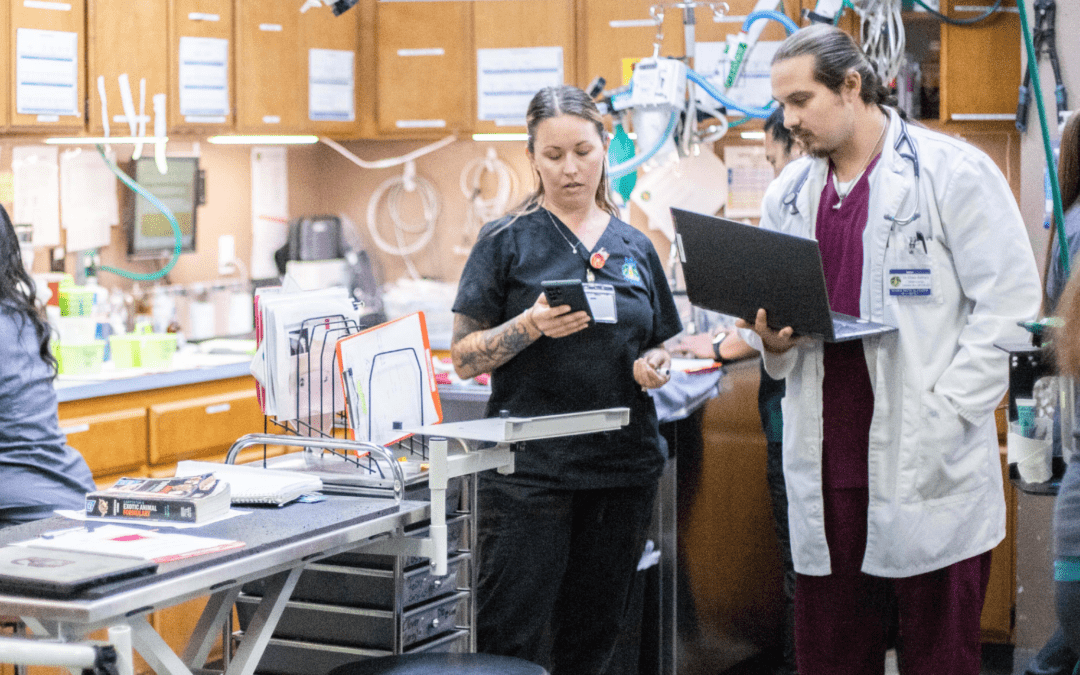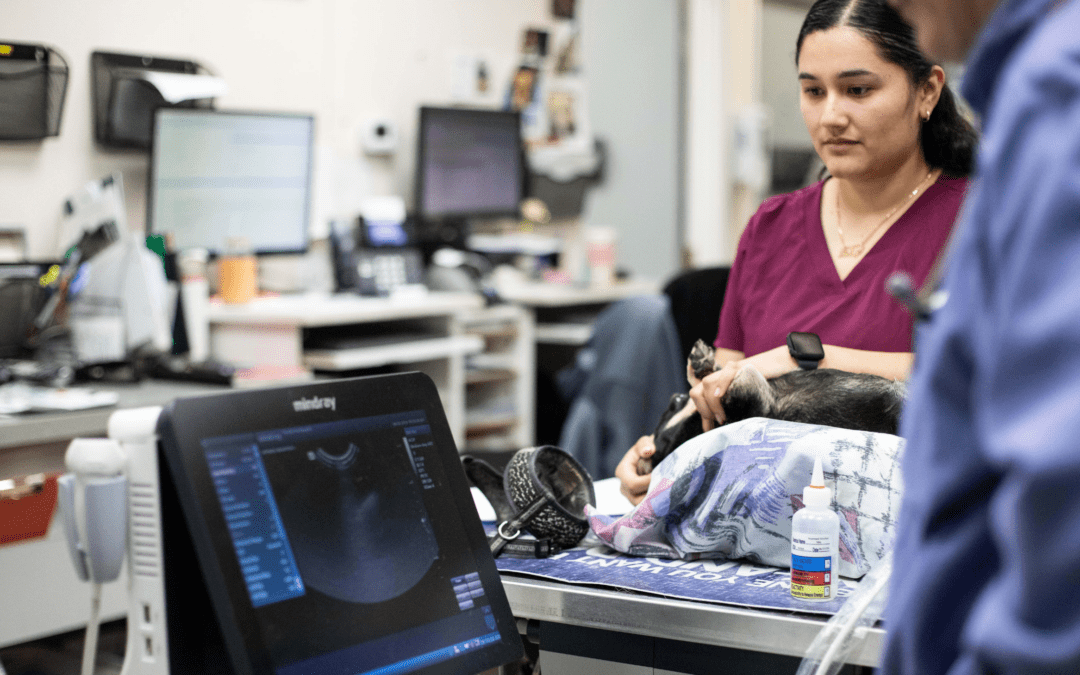COVID-19 has challenged the veterinary industry, but the problem reaches further than the pandemic.
Everyone on your team is dog-tired. You look like something the cat dragged in. The entire staff at your clinic has been putting in long hours for over a year and a half, yet you’re still fielding angry complaints from pet parents upset the next available appointment is a month or more away.
If this describes your work life these days, know that you’re not alone! Veterinary clinics across the country are overwhelmed, with no end to the staggering influx of pet needs in sight.
How did we get here? One reason is definitely the pandemic, but Covid-19 only scratches the surface of the veterinary capacity crisis.
First the Good News
Enthusiasm for pets is at an all-time high, driven skyward during Covid-19. Some 12.6 million pets were adopted between March and December 2020, according to the American Pet Products Association. A record 70% of U.S. households now include furry, feathered, and leather-skinned family members.
Fortunately, early worries that pandemic pets would be returned to shelters have proven overwrought. A May ASPCA survey indicated that 90% of dogs and 85% of cats adopted since the pandemic began will not be rehomed.
What’s more, Americans are becoming more engaged pet parents. The proportion of dogs receiving wellness exams, for example, grew from 78% in 2011 to 90% in 2016 and could hit 96% over the next decade. Wellness care could reach about 80% of cats by 2030 as well.
More pets and more attention to pet care mean more veterinary visits. It would be a good problem to have, except…
…Veterinary Capacity Can’t Keep Up
The average veterinary practice manages more than 13,000 visits annually, and both appointments and the services provided increased year over year into 2021. But the number of veterinary professionals isn’t keeping pace with demand.
Why? For one thing, only five veterinary schools have opened in the U.S. since 1978 and, in existing programs, class size has not meaningfully expanded. As the nation’s population expanded by over 100 million humans and our love for cats and dogs grew, we barely increased our capacity to graduate veterinarians.
One study estimates that the U.S. is currently facing a shortage of up to 5,000 veterinarians. Bolstering that claim, the American Veterinary Medical Association (AVMA) data reveals that nearly half of clinics (45%) have 1.8 vacant veterinarian positions, which go unfilled for 10 months.
Retirements and turnover among vets and vet nurses are exacerbating the problem. About 2,000 Baby Boomer veterinarians are hanging it up every year, and there is a crisis in the retention of vet nurses. More than one-third (35%) of vet nurses quit within five years in the industry, and the average tenure for these talented team members is only seven years total.
The U.S. must address the many underlying issues here, which range from veterinary school debt that’s growing 4.5 times faster than income for new graduates to an average compensation of $32,000 for vet nurses, a pay rate that nears the poverty level in some areas.
Failure to act had experts predicting that 75 million pets could lack access to care by 2030…
…And Then, the Pandemic Hit
Times were tough before Covid-19 but the virus also wreaked havoc on veterinary clinics. By April 2021, 90% of respondents to a veterinary practice survey said their workload had increased, and about three out of four said they often have to stay late to get through all their cases.
Pandemic protocols are contributing to appointment bottlenecks by causing the number of patients that veterinarians can see per hour to plummet 25% over the past year, according to the AVMA. But with the delta variant still raging, safety measures, such as curbside treatment, cannot be readily abandoned. In fact, a PetDesk roundtable discussion in the spring of 2021, when vaccine optimism was at its highest, discovered that only 7% of practices expected to do away with curbside.
Complicating matters, illness, and quarantine requirements have led team members to call out from work. School closures and caregiving duties fell especially hard on an industry that is majority female. Filling the gaps that opened as more women in veterinary professions left or downsized their jobs has been challenging.
These impacts have been especially difficult for an already understaffed industry. Consider that the typical physician relies on about five PAs, nurses, and techs to help with their caseload, and a dentist counts on about three support staffers, while veterinarians average just one vet nurse in the best of times. Have that vet nurse fall ill, quit, or take a leave of absence to help children learn remotely and it’s a recipe for practice disaster.
And if all of that wasn’t challenging enough, many pet parents have been stuck at home, often projecting their own fears and anxiety on the animals around them and upending their routines to boot. Extra outdoors time probably lies at the root of a drastic uptick in canine parvovirus, as well as common summertime pet emergencies. Dietary changes led to more vet visits for digestive issues and allergic reactions. And constant monitoring of pet behavior has caused many pet parents to notice problems they may have overlooked pre-pandemic.
Of course, abundant exercise, loving attention, and comprehensive health and wellness care are overall positive for pets. Nonetheless, these factors affect local vet practices and are leading to longer waits for appointments.
Educating Pet Parents
What can veterinarians do? Sadly, there is little ability in the near term to graduate more veterinarians or address the structural issues limiting the appeal of the vet nurse field, although we should all advocate for change. Given the angry outbursts endured by retail workers, restaurant wait staff, and others on the front lines in our economy, an immediate return to politeness across America is also unlikely.
Veterinary professionals can, however, educate pet parents about why they are waiting for appointments and explain how they can help by:
- Planning ahead for check-ups, medication refills, and other regular needs. Scheduling routine care well in advance will avoid last-minute panic and frustration.
- Handling basic grooming. Bathing pets, brushing their coats, and trimming nails can be handled at home. As an alternative, pet parents can seek out commercial grooming services offered by pet stores and other providers.
- Focusing on pet wellness. Regular exercise and a balanced diet help pets remain healthy, just like humans. Pet parents may also want to stick to the foods a pet is used to in order to keep those pet bellies settled.
- Using the practice’s app. Scheduling appointments, requesting medications, and other basic tasks can be managed online, saving a call to an overwhelmed vet office. Telehealth is another great option to streamline services and help veterinary practices keep up.
More information certainly won’t silence every complainer, but a better understanding of the challenges facing the veterinary industry and the heroic efforts put in by veterinarians and vet nurses can help pet parents realize that when it comes to our pets, we really are all in this together.
At PetDesk, our aim is to make the lives of the veterinary hospitals a little easier with our veterinary client engagement software platform. We’re here to help. Contact us today with all of your client communication questions or concerns!






